Ground Capacity 35,000 2016 Descentralizado, 5th League Peruvian Primera División | President Renzo Ratto Manager Pablo Bengoechea | |
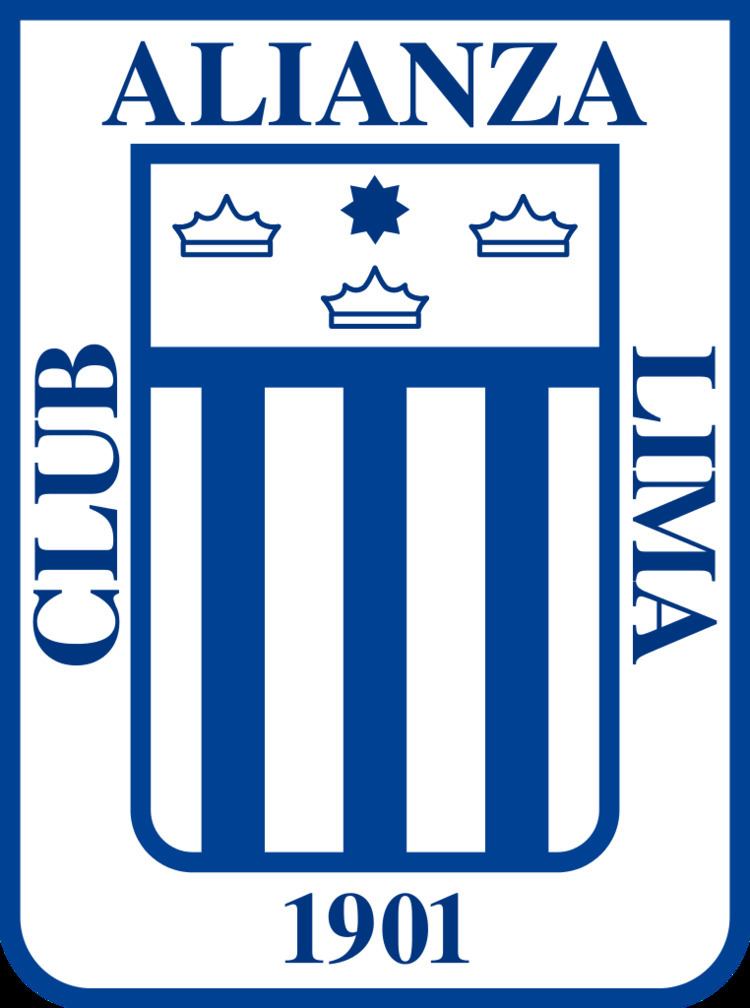 | ||
Full name Club Alianza Lima
(Lima Alliance Club) Nickname(s) Aliancistas, Blanquiazules (The White & Blue Ones), Grones (Black Coloured Ones) , Intimos (The intimates), El Equipo del Pueblo (The People's Team) Ground Estadio Alejandro Villanueva,
Lima Arena/Stadium Estadio Alejandro Villanueva Founded 15 February 1901, Lima District, Peru Profiles | ||
Club Alianza Lima is a Peruvian football club who plays at the Estadio Alejandro Villanueva in the La Victoria District of Lima, Peru. They are the most famous and best supported club in the country and the oldest team in the Peruvian First Division.
Contents
- Beginnings
- Four peat and relegation
- Titles and cup performances
- 1980s decade
- 1987 air tragedy
- The titles and the centenary
- Colours
- Rivalries
- Stadium
- Supporters
- National
- International
- Under 20 team
- Friendly International
- Performance in CONMEBOL competitions
- Records
- Current squad
- References
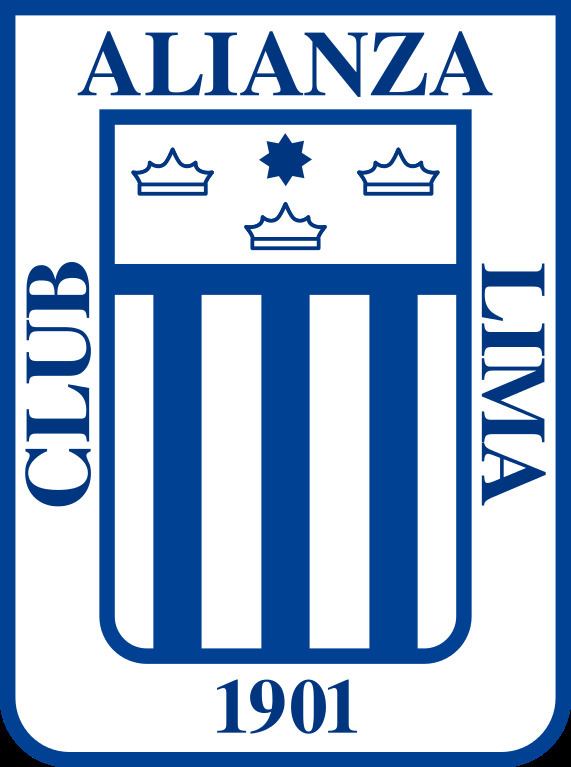
Alianza enjoyed success throughout the first decades of their professional era. In 1987, tragedy struck Alianza when the entire squad and coaching staff were killed in an airplane crash as the team was returning from an away fixture. Alianza moved to its current stadium, named for Alejandro Villanueva, a player who is considered one of the most important Alianza strikers in the 1920s and 1930s.
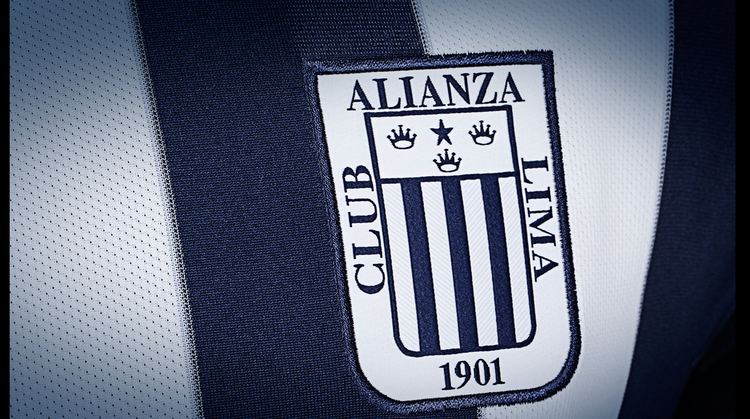
The club is one of the most successful teams of Peru along with its archrival Universitario de Deportes and powerhouse Sporting Cristal. It has won a total of 22 League titles of the Peruvian First Division. The club is the most popular side in Peru, a distinction shared with Universitario. Alianza last won the League championship in 2006 and came in as runner-up in the 2009 and 2011 editions of the tournament.
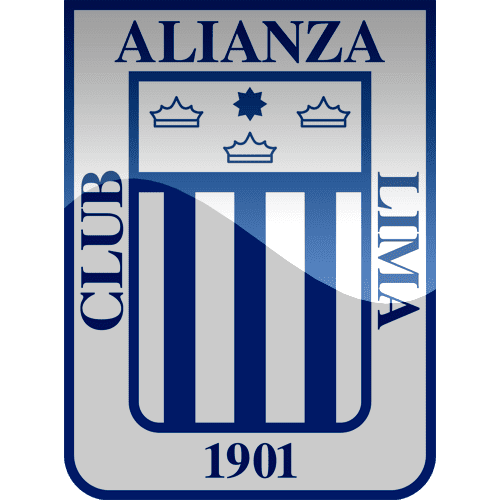
Beginnings
The club was founded with the name Sport Alianza on 15 February 1901 by workers in the Alianza Racing Horse Stud, then property of twice President of Peru Augusto B. Leguía. The stud was located in downtown Lima at the time.
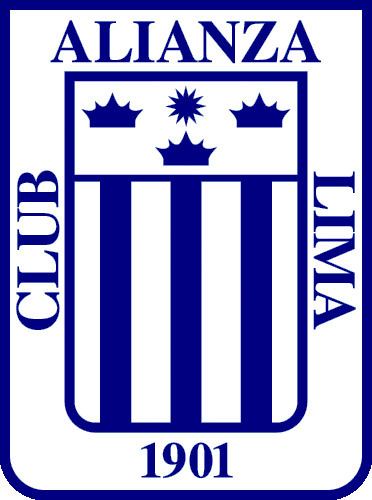
The club is one of the oldest professional football teams in Peru. It was founded on 15 February 1901, as Sport Alianza, named for the stable that hosted its first games. It is the only surviving founding member of the Peruvian Football League, created in 1912. The club's first kit was green and white, honoring founding member Eduardo Pedreschi's Italian heritage. Beginning in 1912, the colors of the Alianza stables, blue, white and black were used, and by the 1920s the classic vertically-striped jersey had become the definitive kit. After a name change to Alianza Lima in 1920, the club continued to compete on an amateur level until 1951, when the League turned professional.
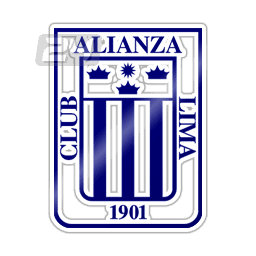
Alianza participated in the amateur era of the Peruvian football league since the inaugural season 1912, winning its first title in 1918. During its first years, it played irregularly against other teams from Lima and the port of Callao. Its matches against Atlético Chalaco from Callao stirred interest as a clash between limeños and chalacos. Sport Alianza had started to become a popular team drawing large support and this was the first derby or "clasico".
Four-peat and relegation

While the Alianza stud changed owners and locations continuously, the team was forced to constantly relocate in turn, until 1928, when under the new name Alianza Lima, the club settled in the third block of the Manco Capac avenue in the La Victoria District, where it would stay and become emotionally attached.
That same year they played against the Federación Universitaria (University Federation) for the first time, which would be later renamed Universitario de Deportes and become their greatest rivals in what is today the most important Peruvian derby.
The 1930s brought great joy and frustration to the team. In 1931, 1932, 1933 an 1934, Alianza Lima won four championships in a row for the first and so far only time in Peruvian football. However the Peruvian Football Federation don´t recognize the championship of 1934 as won by Alianza. Instead it gives it to its heathen rival Universitario.
The memory of the four-peat was tainted by the relegation in 1938. After a year in the Second Division the team returned to the First Division and has stayed there ever since.
Titles and cup performances
During the 1940s, and start of the professional era in the 1950s, 1960s and 1970s, Alianza would win 10 championships. The club won two Peruvian titles in a row in 1977 and 1978, when its players formed the majority of the Peru national football team. The team had its greatest success at the international level in the 1976 and 1978 Copa Libertadores, in which managed to reach the semi-finals but lost to Deportivo Cali 1–4. Since then, its Copa Libertadores campaigns were not successful,during the 1990s the club managed to reach round of 16 several times including a semi-finals participation in the 1999 Conmebol's Copa Merconorte losing to penalty shootout against Colombian side America de Cali the same way it had been defeated by Uruguay's Peñarol a year before in the 1998 Copa Libertadores. Then had one of its worst campaigns in 2007, until the 2010 edition, when they did a great campaign even defeating the defending champion Estudiantes de la Plata by 4–1 in Lima, being one of the 3 top teams at the end of the first round however, in the Round of 16, they lost the chance to advance further with Universidad de Chile, after a controversial match in Chile, where Ecuadorian referee Carlos Vera gave the Chilean side a goal that had already been flagged by the sideline referee as offside and the play had been called off, however Universidad de Chile's coaching staff including teammates and the pressure of a large local croud seem to have given referee Carlos Vera the fast initiave to validate the goal, Alianza Lima had been eliminated in what Peruvian media and other South American media believed to be a robbery, Fox Sports network and ESPN agreed the play should not have been validated, Alianza Lima's president Guillermo Alarcon flew to Asuncion, Paraguay to speak to Conmebol and claiming a straight entry to the next Copa Libertadores, the case was also taken to FIFA headquarters but was not approved. In the 2011 preliminary phase of the Copa Libertadores Alianza Lima came into the tournament as Peru's 3rd place having to face Mexico's Jaguares de Chiapas in a back to back home and away matches for a pass to the Cup's group stage but would lose both games 2–0 and lost a chance to participate . This 2012 version of the Copa Libertadores, Alianza Lima will participate in group 5 as Peru's No. 2 seed against Nacional (Uruguay), Vasco da Gama (Brazil) and the winner of Ecuador's 3rd and Paraguays 3rd.
1980s decade
The 1980s were probably the most bitter years in the club's history. During the first years of the decade, despite having very good players, Alianza could not obtain titles, some which were snatched by Sporting Cristal, which was establishing itself as one of the three big football clubs of Peru.
1987 air tragedy
In 1987, Alianza Lima was first in the standings with a few matches left, and it looked like a new title would be obtained, but tragedy got in the way. On 7 December of that year, Alianza made a trip to Pucallpa to play against Deportivo Pucallpa for the league. The match was won 2–0, with Carlos Bustamante scoring. The team took a charter flight for the trip back. The flight departed on 8 December in a Peruvian Navy Fokker F27 airplane, which crashed into the sea when it was a few kilometers away from the Lima-Callao Airport, close to the Ventanilla district in Callao. The only survivor was the pilot, all the players and coaching staff died, being a game away from conquering another title.
Alianza finished the championship playing with members of the youth team and a few players on loan from Chile club Colo-Colo, which had offered to help sending four players (José Letelier, Parko Quiróz, Francisco Huerta and René Pinto). Friendship between both teams has been strong since then. Alianza could not keep the first place and its greatest rival, Universitario de Deportes, obtained the title.
The team had to restart from scratch and even former players who had already retired, like Teófilo Cubillas, or others who were about to, like Cesar Cueto, played to help the club get out of these bitter times.
Alianza Lima was close to relegation in 1988, but it managed to hold on in the last matches. In the next few years, despite being competitive, it failed to obtain a title.
The titles and the centenary
In 1997, Alianza Lima obtained its first title after 18 years, under Colombian manager Jorge Luis Pinto. In 1999 it came in second place, after losing to Universitario in the finals. In the early hours 2000, tragedy struck again when young captain Sandro Baylón died in a car accident after crashing with a post while driving under the influence of alcohol.
In 2001 the club celebrated its centenary and obtained the national title after beating Cienciano in Cusco on penalty kicks. Later on, Alianza Lima would win the 2003 and 2004 championships, defeating Sporting Cristal in both finals, this time under Argentinian manager Gustavo Costas. In 2006 Alianza Lima won again the championship beating Cienciano del Cusco in the final play-off, enabling them to play the Copa Libertadores. Alianza Lima has been the most successful Peruvian club in this century, having won four championships.
Colours
The team's home colours consists of a shirt with navy blue and white vertical stripes, navy blue shorts and navy blue socks. Its away colours are not commonly used nor well established, playing sometimes in blue, white or green.
During the month of October, as a tribute to the Lord of Miracles, patron of the team, the regular colours are switched to purple and white. The color purple is often associated with the religious image and its procession.
Rivalries
Alianza Lima has had a long-standing rivalry with Universitario, Sporting Cristal, and Sport Boys. Alianza Lima has defeated Universitario 133 times vs 118 won by Universitario and 104 draws.
Stadium
The Club's headquarters are located at the district of La Victoria, city of Lima.
The infrastructure includes the Alejandro Villanueva Stadium with a capacity of 35,000 spectators, training facilities and administrative offices.
The stadium was inaugurated on December 27, 1974, Alianza Lima played Nacional de Uruguay and the score was a tie 2 - 2. The same day Universitario de Deportes defeat Independiente de Avellaneda 3 -0. The game to declare the winner of this tournament was Nacional vs Universitario, the score was 0-1 and the champion wan Universitario de Deportes. In the previuos game Alianza Lima loss against Independiente de Avellabeda 2 -1 therefore Alianza Lima finish in the 4th position of this short tournament.
Uruguayan architect Walter Lavalleja was responsible for the project, with contribution by Alfonso De Souza-Ferreyra. The first phase of works began on 30 May 1969.
Supporters
Alianza Lima's supporters are the largest in Peru. Alianza Lima's "Barra Brava" are called the Comando Svr (spelled with a "V" instead of a "U", the initial of bitter rivals Universitario). In years 2001, 2002 and 2003 Apoyo Opinión y Mercado conducted a comparative research about the composition of the Peruvian supporters: According to the survey, 76% of the respondents supported a football team and 24% had no preference. In 2001, results placed Alianza Lima first with 42% of the answers followed by Universitario with 35%. In 2002, the numbers varied but not significantly. Alianza Lima got 43% Universitario 37% and Sporting Cristal 13% of the answers. Alianza for 2003 reached nearly 50% of preferences compared with 31% of Universitario and 17% of Sporting Cristal. For socio-economic levels, Alianza won in A, C, D and E class, while the Universitario was leader in B class. The research found that Alianza's supporters grow when the respondents where of down living standards (in the E class have the 63%).
In a study of the Compañía Peruana de Estudios de Mercado y Opinión Pública called "Profile of children and adolescents" between men and women from 11 to 17 years in Lima, Alianza wins with the 50% of preferences, followed by Universitario with 37%. Sporting Cristal won the 8% and other teams joined a 5%.
In 2004, a study of the Compañía Peruana de Investigación de Mercados (CPI) gives them the first place in terms of preferences at the population of Lima. 29.7% of the respondents revealed that they’re fans of Alianza. The same study indicates that 27.8% is a fan of Universitario de Deportes. Meanwhile, a 9.2% indicated to be a fan of Sporting Cristal, 3.0% of Cienciano del Cusco, 2.7% of the Sport Boys Callao, 1.1% of the Municipal Sports and a 24.4% did not sympathize with any team.
Despite the continuing controversy over which team is the most popular (between Alianza and Universitario) a survey of Apoyo Opinión y Mercado in 2006 revealed that 54% of Peruvians where soccer fans, and ensures that Alianza Lima owns 35% of the preferences, followed by Universitario, with 32%, and bit further away, Sporting Cristal with 17%, while the remaining teams have a combined 11%.
Also in 2006, in Trujillo, another survey revealed that Alianza Lima where 26% owned, 25% Universitario, 13% Sporting Cristal, Cienciano 7%, César Vallejo 4% Other 2% None 20% No 4% accurate.
In 2007, a survey conducted by the Grupo de Opinión Pública de la Universidad de Lima, allowed to ratify the results of previous years. Alianza Lima leads the polls with 31% followed by 22.6% of Universitario, Sporting Cristal 9.3%, 5.5% Cienciano, Sport Boys Deportivo Municipal and 2.1% 1.1%. In the same survey by socioeconomic level, Alianza won B, C, D and E classes. Universitario, marked differences in class A.
In 2007 too, a study conducted by Arellano Márketing Investigación y Consultoría in 5,300 Peruvians of various ages and socioeconomic backgrounds from 16 cities, gives the first place to Alianza with the 38.3% of preferences, followed by Universitario (34.3%) above appears Sporting Cristal with 15.4% of preferences, and other teams have a combined 13.3%.
In February 2008, the University of Lima revealed Alianza Lima enjoyed, like in previous years, the highest popularity, although this time by a narrower margin. Alianza won with the 29.6% against 29.5% of Universitario. It must be said that the survey was conducted in Metropolitan Lima and Callao. In 2008 also, according to a nationwide survey conducted by ICC, Universitario won with the 38.3% of preferences, Alianza 33.5%, and Sporting Cristal 14.5%.
In October of the same year, Alianza lead preferences with 40% in Lima and Callao, according to a study by Grupo de Opinión Pública de la Universidad de Lima. The survey also revealed that 4 out of 10 Peruvians was a fan of Alianza. The escort teams where Universitario and Sporting Cristal with 35.5% and 13.5%. The list is completed with Cienciano del Cusco with 3.3% to 2.1% Coronel Bolognesi, Sport Boys Callao with 1.7% and 1.1% with Deportivo Municipal. The remaining teams occupy 0.5%.
A survey of the Pontificia Universidad Catolica del Peru between November and December 2008 confirmed that Alianza is the most popular team with the 27% preference in Lima and Callao. Universitario was 21%, and Sporting Cristal 8%. The remaining teams joined by 3%. The survey conducted by the home study was conducted in 15 major urban provinces of Peru. In this regard, Alianza led again with a total 24%, followed by Universitario (20%), Sporting Cristal (9%) Cienciano (3%), FBC Melgar (2%) and Sport Boys (1%) . 35% of those questioned claimed to have no sympathy whatsoever. A survey conducted by Ipsos support between 17 and 19 December 2008, Universitario ranked first in popularity with 34%, one percentage point below Alianza Lima with 33%. The survey was conducted of 515 people older than 18 years and residents of the 16 main cities.
In 2009, CPI released another poll indicating the Universitario was the most popular team in Peru with 38.6% while Alianza reached 33.1%. A survey conducted by Grupo de Opinión Pública de la Universidad de Lima in February 2009, said that Alianza Lima ranked first in popularity with 27.2% below Universitario with 26.6%. The list continue with Sporting Cristal (10.3%), Sport Boys (3.4%), Cienciano (2.4%), Deportivo Municipal (0.4%), Universidad San Martín (0.4%).
In 2014, a research done by the "Euromericas Sport Marketing" agency, ranked Alianza Lima as the most popular soccer team in South America and the second most popular in Latin America. Fans's loyalty to Alianza Lima cannot be matched in the continent, that it even surpassed other big soccer teams from Argentina and Brazil like Boca Juniors and Corinthians.
National
International
Under-20 team
Friendly International
Performance in CONMEBOL competitions
Records
Current squad
As of 2017Note: Flags indicate national team as defined under FIFA eligibility rules. Players may hold more than one non-FIFA nationality.
